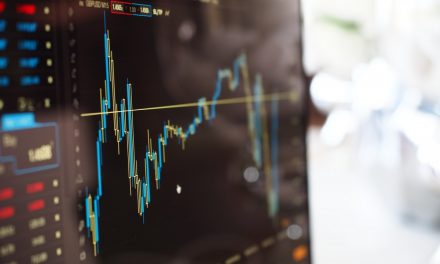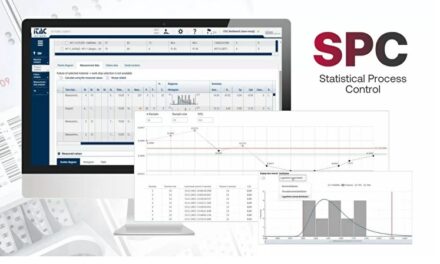What’s the SCOOP – 2022 Predictions Part 3 of 3
More from the movers and shakers of the EMS industry, laying out their predictions and insight on 2022. This is the third part of a three part series
Dieter Weiss, Principal Consultant, in4ma
 Year-end is close and we (Eric Miscoll and I) have been touring around Europe, talking with many EMS companies in order to get an overview of the actual situation.
Year-end is close and we (Eric Miscoll and I) have been touring around Europe, talking with many EMS companies in order to get an overview of the actual situation.
During the IPC seminar in Tallinn/Estonia I explained that the companies had not seen the effects of the allocation problems in their revenues as their raw material inventories in the critical components were giving them a range of 6 to 8 month. It was to be expected that the allocation problems would hit them in the 3rd. Quarter of 2021, and smaller companies with higher inventories in the 4th Quarter at the latest. After analyzing the published results of 12 public companies for the 3rd Quarter, it became obvious that already four EMS saw a substantial impact on their revenues. Now the first public companies start revising their forecasts for the full year downwards with different explanations.
Most companies we visited as well talk about the impact of regionalization and that they are making progress with customers in this respect. Still, we should not expect fast impacts on the revenues and market developments as a transfer of production from the Far East to Europe normally takes between 6 and 18 months. Some smart buyers at the same time try to increase payment terms from 30 to 60 or even 90 days. My advice is that buyers who refuse to accept today’s reality should be sent home.
But there is an indicator about upcoming problems. Cash is king, and many companies are starting to see cash problems. All of a sudden people are willing to talk about a potential sale, which 18 months ago was out of the discussion. M&A activities will further increase.
The further increase in orders will also lead to further labor problems. Companies with several locations are already starting to recruit workers from other countries (e.g. Balkans, MENA) train them in the local factories and then send them over to the main factories in order to fill gaps there.
The difference between under-performers and over-performers will increase. We see some companies who have increased revenues by 20% whereas others can’t even meet the 2019 revenues.
An interesting year is lying ahead of us.
Mike Konrad, Podcaster, Industry Guru and Founder of Aqueous Technology
 Predicting industry trends these days is much like predicting which number will come up at the roulette table (The odds are 1 in 36)! Travel restrictions and mask mandates seem to change more frequently than the weather. I do have some predictions for general trends for 2022. What we have learned is it is far easier to shut down an economy than it is to turn it back on. The world has very little experience with economic shutdowns matching current times. While recessions and regional events may cause economies to slow, I cannot think of an example where so much of the world’s economy was shut down at once. As a result, we have a near historic supply chain disruption. While the press refers to this as a “chip shortage”, the shortages go well beyond components. As a manufacturer of equipment for the EMS industry, we have transitioned our purchasing strategies from just in time to just in case. This of course only adds to the supply chain issues. For many companies, bulking up on inventory may cause a strain on cash flow.
Predicting industry trends these days is much like predicting which number will come up at the roulette table (The odds are 1 in 36)! Travel restrictions and mask mandates seem to change more frequently than the weather. I do have some predictions for general trends for 2022. What we have learned is it is far easier to shut down an economy than it is to turn it back on. The world has very little experience with economic shutdowns matching current times. While recessions and regional events may cause economies to slow, I cannot think of an example where so much of the world’s economy was shut down at once. As a result, we have a near historic supply chain disruption. While the press refers to this as a “chip shortage”, the shortages go well beyond components. As a manufacturer of equipment for the EMS industry, we have transitioned our purchasing strategies from just in time to just in case. This of course only adds to the supply chain issues. For many companies, bulking up on inventory may cause a strain on cash flow.
I believe the supply chain shortages will stay with us for the majority of 2022. While some sectors of the supply chain will see a restoration to normal sooner than others, it only takes one missing part (the weak link) to create delivery delays. We, like many companies, have sourced some alternative parts, occasionally requiring minor modifications to our equipment designs in order to utilize those new parts. Due to the resourcefulness of our team, we have been fortunate (to date) to have avoided delays in shipments.
While we are beginning to see the return of live industry events, (the SMTA Cleaning and Coating Conference, SMTAI, Productronica, IPC APEX Expo to name a few), participation in these events remains lower than normal due to travel restrictions and basic fear. I believe 2022 will see the return of most live events albeit with lower attendance. Fortunately, technical conferences were able to transition to virtual events, providing educational opportunities to many more participants than a traditional live event could offer (and significant savings in travel budgets).
All in all, I believe the electronic assembly industry has fared far better than many other industries with many even reporting record revenue and profits.
There is an infamous Chinese curse which states “May you live in interesting times”. We do indeed live in “interesting” times.
Mattias Andersson, CEO, MTEK
 Companies will further digitalize the monitoring of their factories and supply chains. In order to secure deliveries of good parts, the massive disruptions of the supply during 2021 will speed up the deployment of enhanced digital tools for supply chain and manufacturing management. The focus on replenishment models will be more and more important, all classical techniques from JIT, single piece flows, demand driven manufacturing, heijunka will see an upswing in interest. The manufacturing process is of course of high interest, but the replenishment methodologies will have a higher importance.
Companies will further digitalize the monitoring of their factories and supply chains. In order to secure deliveries of good parts, the massive disruptions of the supply during 2021 will speed up the deployment of enhanced digital tools for supply chain and manufacturing management. The focus on replenishment models will be more and more important, all classical techniques from JIT, single piece flows, demand driven manufacturing, heijunka will see an upswing in interest. The manufacturing process is of course of high interest, but the replenishment methodologies will have a higher importance.
Sustainability will continue to have an ever more important focus. End users care more for the sustainability impact the actual product has made, that they have or will buy, than the sustainability profile of the company that they are buying from. This will emphasize the need for track and trace, in order to enable end users to get a true overview of the sustainability impact individual products cause. In addition, this will further highlight the need for true reduction of waste
Dale Ford, Chief Analyst at ECIA
 The electronic components industry has battled daunting supply chain challenges throughout 2021 as it works to respond to strong end-market demand. To this point, these intractable problems seem to have no near-term solutions. The headlines highlight the trends that will direct the focus of the electronics industry in 2022 beyond the immediate need to source components.
The electronic components industry has battled daunting supply chain challenges throughout 2021 as it works to respond to strong end-market demand. To this point, these intractable problems seem to have no near-term solutions. The headlines highlight the trends that will direct the focus of the electronics industry in 2022 beyond the immediate need to source components.
- The resurgence of geopolitical conflicts will threaten to harden trade barriers and stimulate added supply chain disruptors. A multi-front “Cold War” and increasing dangers of a “Hot Conflict” will add to risks facing a global supply chain. Supply chain planning will need to consider even more numerous and powerful external threats.
- An increased sense of urgency in “Sure Shoring” efforts will motivate actions as geopolitical forces threaten to limit access to supplies and suppliers at diverse points of the supply chain.
- More direct involvement by federal and state governments will drive investments to facilitate supply chain flow & efficiency and encourage/foster the return of all types of manufacturing, especially domestic high-tech manufacturing. Expect continued development of proposals and programs to address national security issues related to electronics and electronics components and secure manufacturing capability. Hopefully, attempts will be pursued to coordinate efforts to begin to reproduce the necessary, self-sustaining, core electronics manufacturing eco-systems.
- Inflation will add another stressor to the supply chain as external cost increases in sectors such as shipping, energy, storage, etc. add to costs of manufacturers and distributors. As central banks battle inflation with “tapering” of the money supply the cost of capital will increase and pressure investments, prices, and profits.
- The pandemic will not resolve any time soon and this will continue to create labor shortages, both direct and indirect in support industries. Mental health challenges of employees will drive more focus on healthy practices and programs to help. Companies will have to become more innovative in retaining and supporting current employees while also pursuing new avenues of productivity/efficiency to offset difficulties in sourcing new employees.
- As artificial intelligence (AI) grows in importance it will address the need to analyze and act in a digital world to compete effectively and deliver timely supply chain solutions to continuing unforeseen disruptions.
- The scramble to access, protect and control critical natural resources, including materials such as titanium that are central to battery production, will challenge companies and governments. Also, the ability to process these materials for manufacturing in a cost-effective way will grow in importance in the U.S.
- While the pandemic boosted the pace of Industry 4.0 adoption and digital advances, it will become an increasing hindrance in the economy as it erodes consumer confidence and challenges the consumer spending that has driven strong end-market demand.
- Exciting technological innovations will continue to advance and find adoption in the marketplace but will have to compete with a multitude of concerns to capture headlines.
David Sharp, Vice President of Products at Calcuquote
 Uncertainty and volatility have been the defining trends of the 2020 and 2021 supply chain. While the electronics supply chain is no stranger to ups and downs, the sheer unpredictability of the past two years leaves us standing at the precipice of 2022.
Uncertainty and volatility have been the defining trends of the 2020 and 2021 supply chain. While the electronics supply chain is no stranger to ups and downs, the sheer unpredictability of the past two years leaves us standing at the precipice of 2022.
The Electronics Manufacturing Services (EMS) industry should expect to demonstrate a continued need for technology in 2022. The global supply chain issues exacerbate component stock and availability concerns plaguing the EMS industry. Advanced technology will continue to be a requirement for companies to stay competitive. Instant stock, quantity, and pricing visibility are paramount for companies to make informed decisions with speed and accuracy. Customers will continue to request quotes and place orders faster than ever to align with the ever changing stock levels and designs. A system for customers to manage their own requests and place orders with a click of a button will be the next step for the future.
Alongside the need for technology, 2022 will show us that connectedness across vendors and customers is even more important in a market that is rapidly changing and growing. Open dialogue with component distributors and manufacturers is the strongest tool EMS businesses will have to guard against future disruptions and manage existing shortages. Similarly, transparency between EMS companies and their customers is equally important, so as to set realistic expectations and forge stronger relationships. Embedding technology into supply chain processes between vendors and customers allows connectedness and transparency to grow as the world continues to move at a faster rate. Companies will begin to rely on the softwares they have in place to aid in the relationship they have with their vendors.
Don Akrey, President Americas of TTi Inc.
 The TTI Family of Specialist Companies (TTI, Mouser, Sager, RFMW, Symmetry) continue to see increased value of incoming orders. The actual number of booked orders seem to be plateauing at these record levels. The main driver of the continued revenue growth while the orders numbers are plateauing is the cost increases for the components. We expect bookings and number of orders to continue at todays levels or slightly higher through Q2 2022. We are forecasting a softening in Q3 2022 as the gaps in the supply chain are filled and customer inventory are brought down. The full 2022 year should show growth in the 7-10% range.
The TTI Family of Specialist Companies (TTI, Mouser, Sager, RFMW, Symmetry) continue to see increased value of incoming orders. The actual number of booked orders seem to be plateauing at these record levels. The main driver of the continued revenue growth while the orders numbers are plateauing is the cost increases for the components. We expect bookings and number of orders to continue at todays levels or slightly higher through Q2 2022. We are forecasting a softening in Q3 2022 as the gaps in the supply chain are filled and customer inventory are brought down. The full 2022 year should show growth in the 7-10% range.
As a distributor we have seen inventory levels increase since June 2021. We expect this trend to continue based on our suppliers ability to increase capacity and navigate the logistics issues. Our inventory levels are at record levels but the turns have not yet returned to normal levels. We expect this to happen in the 2nd half or 2022.
There are two situations that we do not see changing during 2022. The first being the inconsistency and increased costs of the logistics/transportation services. All transportation methods will struggle throughout 2022 and into 2023. The second harsh reality is that the cost of the components will continue to increase. These cost increases are driving my raw material and labor increases.
Oren Manor, Director of Business Development Electronics Manufacturing, Siemens Industry Software
 As discussions around the grim situation of planet Earth continue and the real-life implications of climate change across the globe become more and more evident, focus will be placed on the carbon footprint and environmental impact of electronics manufacturing. Until recently, the electronics industry including consumer automotive, networking and aviation electronics has been spared the scrutiny placed on other manufacturing industries such as clothing, toys and plastics. For the last decade, electronics has been deemed as a savior and as a key action by which to “go-green” and divert traditional but environmentally impactful processes to digital ones with a significantly reduced impact on the environment. As an example, emailing is commonly believed to have reduced environmental impact compared with traditional mail.
As discussions around the grim situation of planet Earth continue and the real-life implications of climate change across the globe become more and more evident, focus will be placed on the carbon footprint and environmental impact of electronics manufacturing. Until recently, the electronics industry including consumer automotive, networking and aviation electronics has been spared the scrutiny placed on other manufacturing industries such as clothing, toys and plastics. For the last decade, electronics has been deemed as a savior and as a key action by which to “go-green” and divert traditional but environmentally impactful processes to digital ones with a significantly reduced impact on the environment. As an example, emailing is commonly believed to have reduced environmental impact compared with traditional mail.
The global pandemic, driving remote work and social distancing has opted for many “digital” applications and solutions driving the need for networking equipment, audio/video over the web and the associated required computer power at the server and on the edge. Again, Electronics is the “savior” allowing this mini-revolution and changing traditional hundred year old processes within weeks. As an example, banking personnel who for decades were required to work on-premise, commuting daily to the office, were suddenly enabled with VPN access and permitted to work from home. Banks and financial institutions expedited the country-specific regulatory approvals and put in place the required security and authentication mechanism to safeguard our money. This transformation again required a heavy investment on electronic equipment.
But things are changing. And as the world learns to “live alongside the pandemic” electronics will not be spared the leeway it was provided in the past. In addition, consumer habits and electronics lifecycles are becoming shorter and shorter with cell phones being replaced at as little as every 18 months. This is causing the electronics waste to pile up and is starting to have a significant environmental impact. In addition, the amounts of data sent and stored globally is requiring more and more data centers and the electricity required to power the servers and the associated cooling systems are no longer negligible in terms of carbon footprint/
As environmental catastrophes such as the deadly wildfires in the Greece Islands over the summer or the latest Delhi air pollution school closure become more and more frequent the eyes will be turning over to manufacturers including electronics. Authorities will begin to regulate, monitor and control energy consumption. This will send Electronics Manufacturers to add energy consumption collection capabilities to their Manufacturing Execution Systems and start making equipment purchasing decisions based on energy efficiencies. In addition, factory layout and Intraplant logistic routes will be designed to be energy consumption optimal and finally electronic products and PCBs will be designed for sustainability throughout the manufacturing process.
As major cities battle air pollution they will start enforcing regulations such as the Netherlands Zero-Emission Commercial Vehicle Zones announced to start by 2024 in Amsterdam and other major metropolitan areas. This will increase the global demand for EVs including commercial EV minivans and light trucks used for deliveries and intercity logistics adding to the existing heavy demand for EV cars and SUVs. They will require the production of even more EPCUs (Electric Power Control Unit) , Inverters, VCUs (Vehicle Control Units), On-Board chargers and BMSs (Battery Management Systems). All these have many electronic modules including PCBs, connectors, harness cables and chassis. This will result in yet more demand for electronic components and electronic manufacturing capacity to assemble these units.
So, it is reasonable to expect that the global shortage in components as well as the high freight transportation costs will continue in 2022. Manufacturers will need to balance between investing in additional manufacturing machines to answer the continued demand for EV modules while balancing with the recent manufacturing downtimes caused by the simple lack of components.
Still, EV modules are different to a cell phone charger or webcams and require higher levels of automation, more complicated manufacturing processes and are under higher levels of compliance. So we should expect manufacturers to start shifting capacity, upgrading manufacturing lines and digitizing production lines to be ready to build these modules fast and reliable.
Carsten Salewski, member of the Executive Board at Viscom
In my opinion 2022 will be a transition year. Demand for electronics will be high. Industry output will lack behind in almost every category such as phones, cars, entertainment, and communications. Probably not too much behind but I would be surprised if you walked into a store before Christmas 2022 and just got your Xbox Series X or any other sought-after device without reservation.
That is if there will still be stores. Maybe we will see a faster transition to e-mobility in online store delivery trucks for the last mile. The automotive industry is already rapidly changing: More electric vehicles, autonomous driving and computing power in the car will advance our business.
On the one hand, I honestly expect supply chain issues to continue throughout the coming year. With increasing prices for raw material and energy, equipment cost will increase, and lead times will be challenging. Therefore, our extra efforts in supply chain management will have to continue.
But, on the other hand, 2022 will also be a major year for increasing sustainability. People and therefore companies all over the world realized it’s time for a change, if we want to work against the world’s no.1 challenge of global warming. We take part in this green movement and will expand our efforts towards clean energy and sustainable products.
Regarding the omnipresent Corona pandemic: It will most likely take more than next year to shake it off. We’re pretty sure we will continue to digitally connect with customers and industry friends next year. I really hope that IPC Apex Expo in San Diego will be a well-attended kick-off for 2022 but I wouldn’t be surprised if we had another year of limited trade show activities. With Productronica in November 2021 we could take a glimpse at what the future of trade shows might be in one or two years. It was finally a very much needed chance to meet in person and foster relationships in the industry.
So, all in all, it sure will be a growth year for us and our industry. New technologies, with some caveats, will be available and the electronics industry is strong overall, despite all difficulties. We look forward to 2022 and what it will bring!
What’s the SCOOP? It’s got to be tough, but we’re prepared! Let us all contribute to a successful year and hope for the best.
See also:
- What’s the SCOOP – 2022 Predictions – Part One
- What’s The SCOOP – 2022 Predictions – Part two
- Follow the “What’s the SCOOP?” videos and podcasts.













